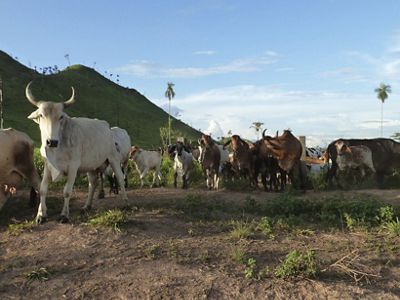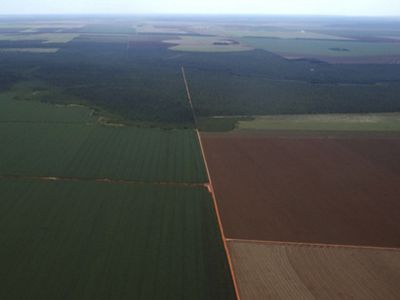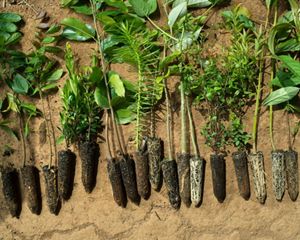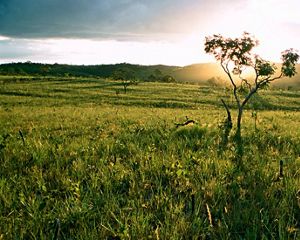Few would argue with the idea that deforestation-free supply chains are a good thing—in theory, at least. But what does deforestation even mean, and how is it evaluated? These are some of the questions that are still to be determined as the countdown to the biggest deal in town for deforestation commitments worldwide ticks down to just a thousand days.
In 2014, more than fifty companies and a number of governments signed on to the New York Declaration on Forests and Climate. This was historic on a number of counts, but the most important was a commitment to “eliminate” deforestation from four commodity supply chains—beef, soy, pulp and paper, and palm oil—which account for somewhere around 80 percent of all tropical deforestation, and to do it by or during (the text is deliberately ambiguous) 2020.

How are we doing? Not brilliantly, to be honest. While progress has been made in some commodities and places, there is a whack-a-mole feel to deforestation in supply chains more generally. Soy in Brazil gets its act together while soy in Bolivia and Paraguay explodes; no sooner does palm oil in Indonesia improve before palm oil starts driving deforestation faster in Ecuador and Peru.
Meanwhile, beef—by far the biggest deforestation driver of all—sits in the back row trying to avoid the teacher’s attention, hoping nobody will notice the far fewer number of commitments beef market actors have made. Betting on most of those concerned missing the ball has been a successful strategy for them so far, as the media and various campaign groups go after the soy and palm oil players, who for all their issues continue to be the two New York Declaration sectors to have made the most effort to manage deforestation in their supply chains.

These companies complain, rightly, that environmental groups have never given them the straightforward guidance they need to implement their commitments. How do we even define deforestation, which sounds simple but isn’t—consider the subtle distinctions between a forest and a wood. What is an acceptable monitoring standard? How should progress be measured and reported? And so on. Without that guidance, there is a risk that each company uses a different standard, no claims can be verified against an accepted benchmark, and no company will be able to make credible claims of progress in implementing their New York Declaration commitments.
The environmental movement has responded. Earlier this year, The Nature Conservancy helped to put together a critical mass of NGOs—WWF, Greenpeace, Rainforest Alliance and others—to provide that guidance, in an initiative called the Accountability Framework. The initiative website now hosts a set of guiding principles, posted for companies and other interested parties to comment on. The public comment period is currently open.
A more detailed operational manual will also be coming out in 2018. Timing is tight, but we still have two years to hit the New York Declaration timeline. Companies have through this month to comment: it would be a good present for the world if we can all buckle down to implementing next year and starting to make the New Declaration more than a statement of intent, but a reality on the ground.
Global Insights
Check out our latest thinking and real-world solutions to some of the most complex challenges facing people and the planet today.


